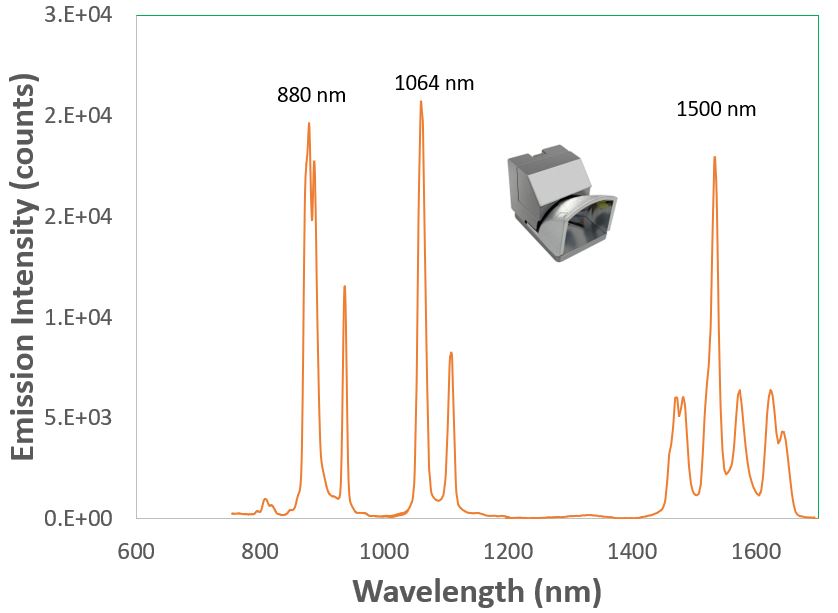In the field of remote sensing and depth measurements, LEP and LED LIDAR (or LEDAR) can offer significant advantages. LIDAR is short for “light detection and ranging”; it works by bouncing invisible (infrared) light pulses off objects in order to measure distance and depth from how long it takes the light to return to the sensor. The development of a compact and low-cost LIDAR system has been the aim of research for a long time. Laser Diodes (LD) and Diode-Pumped Solid State (DPSS) Laser technology are generally used in LIDAR applications. However, lasers are single line emitters and are generally more expensive, especially those available in the infrared spectral region. With laser-based LIDAR, the beam from high power lasers can be hazardous and must be expanded large enough to be considered eye-safe. That’s not the case for LIDAR sources based on laser-excited phosphors since the generated long-range beams of light can cover larger areas and are considered eye-safe. A compact low-power LIDAR system can be built using a phosphor-converted LEDs (pcLEDs) or LEP with customized emission that can cover the UV, visible, NIR, and even the SWIR parts of the spectrum. A single multi-spectral LED or LEP can replace multiple lasers and low power LED/LEP lamp modules do not generally need an elaborate heat sink or active cooling. IR LED and LEP technologies can also be used for LiFi (light fidelity) applications in bidirectional wireless systems that transmits data using infrared light.
Our proprietary LEP & LED LIDAR sources can operate outside the human vision spectral range and in the eye-safe region of the spectrum. They can be customized to emit at 880nm, 1064nm, and 1500nm to match existing IR sensor technologies. Combining multiple NIR & SWIR spectral lines can help reveal detailed depth properties along with material or atmospheric compositions that are not otherwise apparent to existing autonomous vehicle LIDAR sensors or to traditional machine vision systems. Sources can also be designed to avoid strong attenuation by rain water droplets and vapor or fog in the atmosphere.
Phosphor-converted LEDs (pcLEDs) and Laser-excited phosphors (LEPs) can play a key role in delivering customized LIDAR sources with broadband or narrow-band lighting for these advanced imaging techniques. The emission properties of a pcLED or LEP system can be tailored to the specific application or a particular imaging system whether it is based on a CMOS, InGaAs or a quantum dot camera technology. By combining IR phosphors with LEDs or lasers, it is possible to develop low-cost and high power sources that can be used with many of the existing LIDAR (even LiFi) architectures.

Customized Phosphor-converted LEP Source for Long-range Multispectral NIR-SWIR LIDAR, Imaging, and LiFi